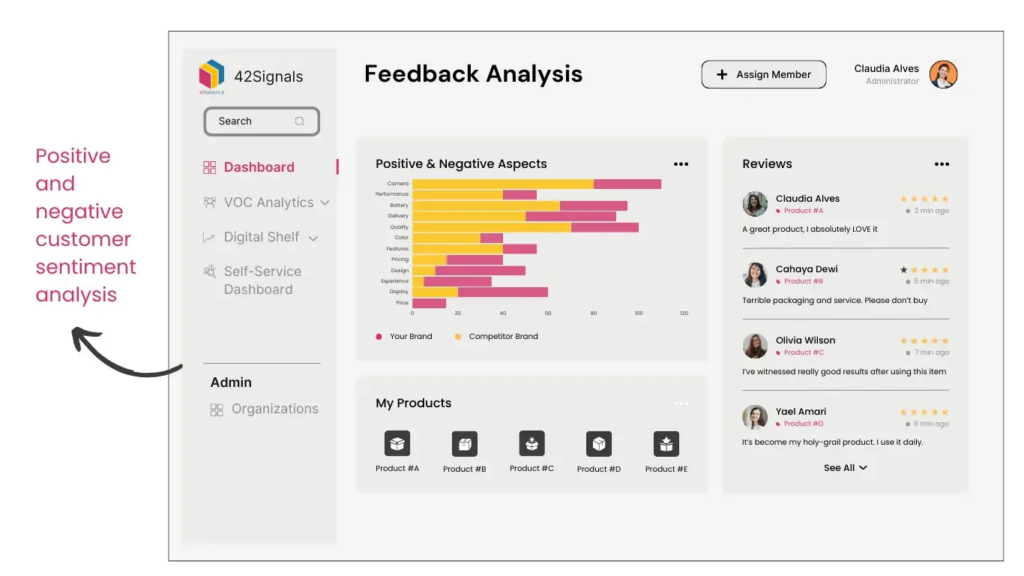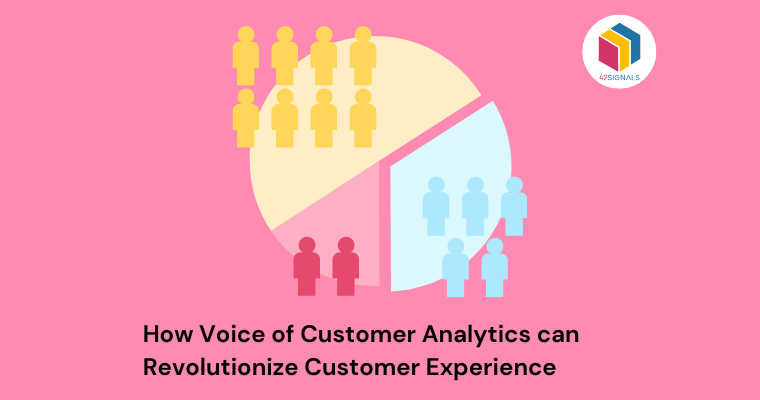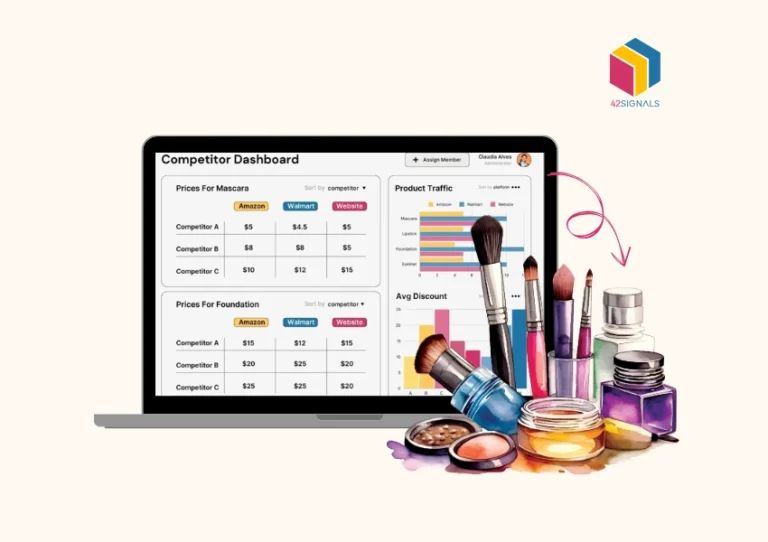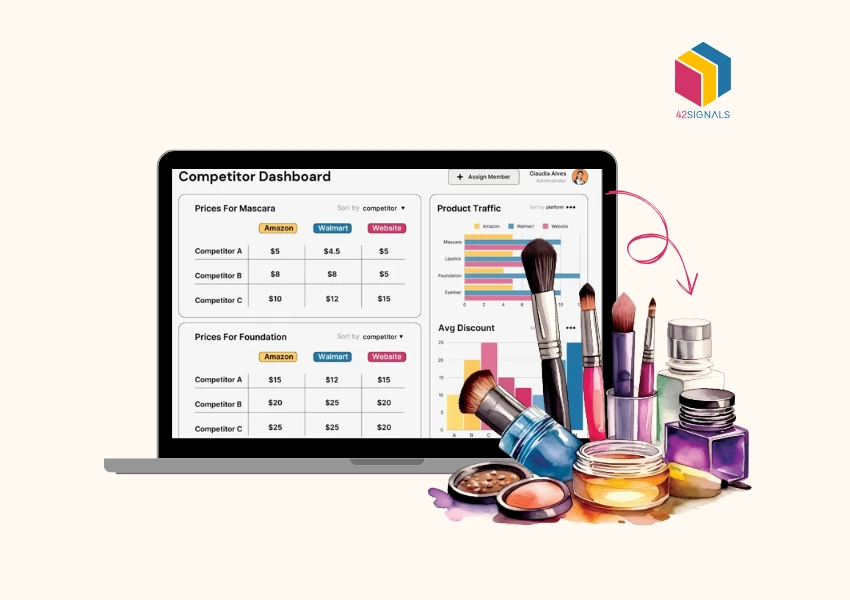Voice of Customer Analytics, In the bustling and fiercely competitive business realm, creating unforgettable customer experiences has evolved into a climactic game-changer. Consider that cozy café you adore, where the barista greets you by name and knows your regular order – stepping in feels like a warm embrace. This embodies the essence of customer experience, extending well beyond a mere cup of coffee.
To truly deliver exceptional customer encounters, businesses must delve into their customers’ preferences, behaviors, and pain points at a granular level. This is precisely where the role of Voice of Customer (VoC) analytics emerges.
Voice of Customer (VoC) analytics is like listening to a million conversations without being intrusive. VoC analytics involves the collection, analysis, and interpretation of customer feedback data to gain insights into customer needs, expectations, and concerns. Through natural language processing, machine learning, and sentiment analysis, it extracts valuable insights from large amounts of structured and unstructured customer data.
In this article, we’ll delve into how VoC analytics can transform customer perceptions of a company and explore its significance for businesses striving to outperform their competitors.
Revolutionizing Customer Experience with Voice of Customer Analytics
Traditionally, businesses have relied on surveys, focus groups, and customer service interactions to hear what customers think. But these ways often didn’t give the full picture, provided limited insights, and failed to capture the complexity and diversity of customer opinions. VoC analytics does things differently – it enables organizations to listen to their customers continuously and at scale.
Here are some ways in which VoC analytics can revolutionize customer experience:
Personalization:
VoC analytics helps companies group their customers depending on what they like, how they act, and what they say. This way, businesses can make experiences that fit each person’s wants, leading to increased customer satisfaction and loyalty. For example, imagine a beauty brand leveraging VoC analytics to pinpoint loyal customers who regularly purchase a specific skincare product. By recognizing this pattern, the brand can send personalized notifications offering exclusive discounts or early access to new arrivals, enhancing the customer’s engagement and strengthening their affinity for the brand.
Proactive Problem Resolution:
Voice of Customer Analytics empowers businesses to detect and address customer issues promptly, reducing churn and improving overall customer satisfaction. By analyzing customer feedback from various channels, such as social media, review sites, and contact centers, organizations can identify common problems and resolve them proactively. For example, a telecom provider might use VoC analytics to identify network coverage issues in a particular area and send targeted messages to affected customers offering free data credits or discounts.
Improved Product Development:
VoC analytics provides valuable insights into customer needs and preferences, helping businesses design products and services that meet their expectations. By analyzing customer feedback, organizations can help identify feature gaps, usability issues, and areas for improvement, enabling them to create products that resonate with their target audience. For instance, a software company might use VoC analytics to inform the development of a new product version, incorporating customer suggestions and requests to enhance user experience.
Enhanced Customer Engagement:
VoC analytics makes it easier for companies and customers to talk in a way that feels genuine. This helps create trust and strong relationships that last a long time. When businesses listen to what customers have to say and reply in the right way, it shows they really care about making customers happy. This makes customers want to come back again and positive word-of-mouth referrals. For example, a retailer might use VoC analytics to identify customers who express frustration with their shopping experience and offer personalized assistance, such as a styling consultation.
Benefits of Voice of Customer Analytics

The benefits of VoC analytics extend beyond improved customer experience. Here are some additional advantages of implementing a Voice of Customer Analytics program:
Cost Effective
According to a study by Watermark Consulting, companies that excel at customer experience achieve higher revenues per customer compared to those that lag behind in customer experience. By leveraging VoC analytics, businesses can identify areas for cost reduction while simultaneously improving customer satisfaction, resulting in increased profitability.
Competitive Advantage
In today’s customer-centric marketplace, providing exceptional experiences is no longer sufficient; businesses must exceed customer expectations to stand out from the competition. VoC analytics equips organizations with the insights necessary to anticipate customer needs and deliver unique experiences that differentiate them from rival brands.
Improved Decision-Making
VoC analytics offers a data-driven approach to decision-making, enabling businesses to base their strategies on objective customer feedback rather than assumptions or gut instincts. This results in more effective initiatives and resource allocation, ultimately contributing to organizational success.
Best Practices for Implementing Voice of Customer Analytics
To overcome these challenges and maximize the effectiveness of VoC analytics, organizations should follow best practices, such as:
Defining Clear Objectives
Start by linking the voice of customer analytics goals directly to measurable business priorities. Avoid vague aims like “understand customers.” Instead, define objectives that solve specific problems:
Boost customer lifetime value (CLV) by uncovering upsell opportunities in feedback.
Align every analysis phase to these goals—this forces focus, justifies resources, and enables ROI tracking. Example: A SaaS company targets a 20% reduction in support tickets by prioritizing feature updates mentioned in 70% of negative reviews.
Reduce customer churn by identifying at-risk segments through sentiment trends.
Increase product adoption by pinpointing friction points in user journeys.
Selecting the Right Technology for Voice of Customer Analytics:
Choose tools that grow with your needs and connect to existing systems. Prioritize:
Real-time dashboards that highlight critical issues (e.g., sudden spikes in “delivery delays” mentions).
Avoid siloed solutions. Ensure tools integrate with your CRM, marketing automation, and product analytics platforms to contextualize feedback.
Unified data ingestion to merge feedback from surveys, call transcripts, social media, reviews, support tickets, and CRM data.
AI-driven capabilities like NLP for auto-tagging themes, sentiment analysis across languages, and predictive trend alerts.
Building a Cross-Functional Team
Get a team together with different skills – like data experts, salespeople, and customer support folks. They’ll work together to plan, design, execute, and interpret VoC analytics.
VoC success requires breaking down departmental walls. Assemble a core team with:
- Data analysts/scientists to model trends and ensure statistical rigor.
- Product managers who translate feedback into feature roadmaps.
- Marketing leads use insights for campaign messaging and persona refinement.
- Customer support supervisors are closing the loop with affected users.
- Executive sponsors championing resource allocation and company-wide adoption.
This team should meet bi-weekly to review insights, assign actions, and track impact, turning data into collective ownership.
Using Multiple Data Sources for Voice of Customer Analytics
To really know what customers think, use lots of different info sources like surveys, reviews, social media, and data from your customer records. This way, you’ll get the full picture of what customers feel. It’s like looking at a puzzle from different angles to see the whole picture.
Relying on one feedback channel (e.g., surveys) risks skewed insights. Actively triangulate data:
- Direct feedback: CSAT surveys, interviews, and support tickets for structured insights.
- Indirect feedback: Social media, review sites, and community forums for unprompted sentiment.
- Behavioral data: App usage logs, clickstreams, and purchase histories revealing what customers do versus what they say.
Example: If survey responses praise a feature, but app analytics show low engagement, dig deeper into usability issues.
Continuously Monitoring and Analyzing Feedback
Continuously monitor and analyze customer feedback to identify emerging trends and issues. This will enable organizations to react quickly to customer concerns and improve their overall experience.
Move from periodic “pulse checks” to always-on listening:
- Automate alerts for critical issues (e.g., “security breach” mentions trigger immediate escalation).
- Track sentiment trends by product line, region, or customer segment to spot emerging risks.
- Benchmark against competitors using public review data to identify relative strengths/weaknesses.
Assign owners to review real-time dashboards daily and weekly trend reports.
Acting on Insights
Finally, act on the insights gained from Voice of Customer Analytics. Use the insights to make tangible improvements to products, services, and customer experiences. Communicate the changes to customers and solicit further feedback to refine and optimize the improvements.
Analysis without action destroys credibility. Use a simple framework:
- Categorize insights by impact (e.g., “affects 80% of customers”) and effort (e.g., “requires 2-week engineering sprint”).
- Pursue quick wins first: Fix broken links, clarify confusing copy, or resolve shipping delays—these build momentum.
- Launch strategic initiatives for high-impact themes: Redesign onboarding flows if “complex setup” is a top complaint.
- Close the loop: Inform customers of changes (“You spoke, we listened!”). This builds trust and encourages future feedback.
Embed Voice of Customer Analytics into Organizational Culture
Make customer insights everyone’s responsibility:
- Share VoC highlights in company all-hands meetings to celebrate customer-driven wins.
- Train customer-facing teams to solicit feedback and explain how it shapes decisions.
- Tie leader KPIs to VoC-driven metrics (e.g., “Improve product satisfaction by 15%”).
- Conduct quarterly VoC audits to refine goals, sources, and tools as business needs evolve.
Measure Impact Relentlessly
Prove VoC’s value by tracking downstream results:
- Short-term: Reduced ticket volume after process fixes, higher survey completion rates.
- Mid-term: Improved NPS/CSAT scores in targeted segments, higher retention.
- Long-term: Revenue lift from new features inspired by feedback, cost savings from churn reduction.
Example: A retailer tracked a 30% decrease in “returns process complaints” within 1 month of simplifying policy—directly attributed to VoC insights.
Conclusion:
Voice of the Customer (VoC) analytics is a game-changer when it comes to understanding how customers feel and act. Thanks to AI, machine learning, and natural language processing, businesses can dive into a sea of customer feedback data and uncover valuable patterns and insights that manual efforts might miss.
But diving into VoC analytics needs a smart approach. It means setting clear goals, picking the right tech, building teams with different skills, using lots of info sources, keeping an eye on feedback all the time, and most importantly, using what you learn to make things better for customers.
Get in touch with us today and embark on a journey to create exceptional customer experiences that drive growth and loyalty. Contact us at sales@42signals.com. Your customers’ voices are waiting to be heard, and we’re here to help you listen and thrive.
Frequently Asked Questions on voice of customer analytics
What is voice of customer analysis?
Voice of Customer (VoC) analysis is the process of collecting, interpreting, and acting on feedback from customers about their experiences, expectations, and satisfaction. It involves analyzing input from various channels — such as surveys, reviews, social media, support tickets, and interviews — to identify common themes, concerns, and opportunities for improvement.
The goal is to better understand what customers truly think and feel about your brand, products, or services, and to use those insights to guide product development, service improvements, and customer experience (CX) strategies.
What is the voice of the customer analyst?
A Voice of the Customer Analyst is a professional who specializes in turning customer feedback into actionable insights. Their role involves:
- Gathering and organizing customer input from different touchpoints
- Analyzing trends, sentiment, and recurring issues
- Creating reports and dashboards that visualize findings
- Recommending strategic improvements to teams across the business
They often work closely with product, marketing, customer success, and CX teams to ensure the customer perspective is integrated into business decisions. This role is key in helping companies stay aligned with customer needs in real time.
What is the voice of the consumer analysis?
Voice of the Consumer (VoC) analysis is essentially the same as Voice of the Customer, though the term “consumer” is often used in broader contexts such as retail, CPG (consumer packaged goods), or market research.
It refers to the structured process of evaluating consumer feedback, behaviors, and preferences — usually at scale — to gain a deeper understanding of purchasing motivations and brand perception. It’s especially useful for companies looking to stay ahead of market trends or shifting consumer expectations in competitive environments.
What is the difference between CX and VoC?
While closely connected, Customer Experience (CX) and Voice of the Customer (VoC) are not the same:
- CX (Customer Experience) is the total journey a customer has with a brand — across touchpoints like websites, apps, stores, and customer support. It includes every interaction that shapes how a customer feels about the business.
- VoC (Voice of the Customer) is the insight-gathering process that helps businesses understand how customers perceive those experiences. It captures the “why” behind satisfaction or frustration.
In short:
CX is the experience itself. VoC is how you learn what the customer thought about it. VoC fuels CX improvements by providing the feedback loop needed to drive meaningful change.







